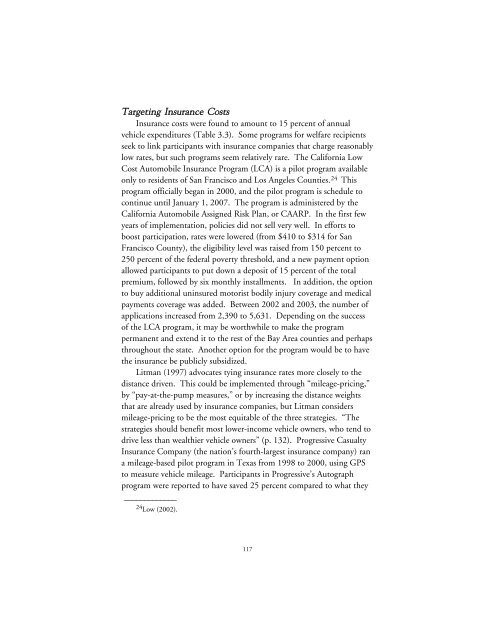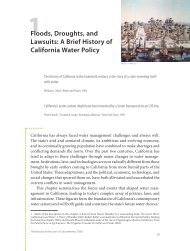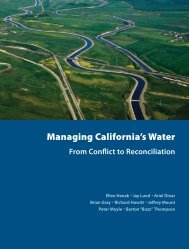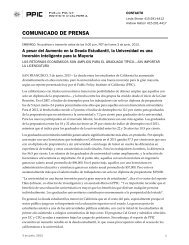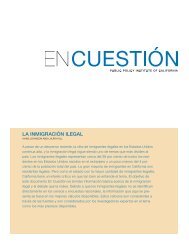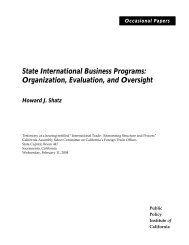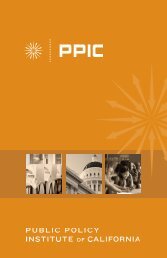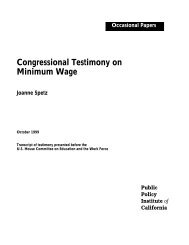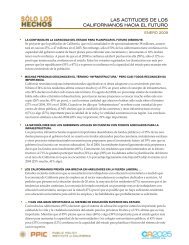Transportation Spending by Low-Income California Households ...
Transportation Spending by Low-Income California Households ...
Transportation Spending by Low-Income California Households ...
You also want an ePaper? Increase the reach of your titles
YUMPU automatically turns print PDFs into web optimized ePapers that Google loves.
Targeting Insurance Costs<br />
Insurance costs were found to amount to 15 percent of annual<br />
vehicle expenditures (Table 3.3). Some programs for welfare recipients<br />
seek to link participants with insurance companies that charge reasonably<br />
low rates, but such programs seem relatively rare. The <strong>California</strong> <strong>Low</strong><br />
Cost Automobile Insurance Program (LCA) is a pilot program available<br />
only to residents of San Francisco and Los Angeles Counties. 24 This<br />
program officially began in 2000, and the pilot program is schedule to<br />
continue until January 1, 2007. The program is administered <strong>by</strong> the<br />
<strong>California</strong> Automobile Assigned Risk Plan, or CAARP. In the first few<br />
years of implementation, policies did not sell very well. In efforts to<br />
boost participation, rates were lowered (from $410 to $314 for San<br />
Francisco County), the eligibility level was raised from 150 percent to<br />
250 percent of the federal poverty threshold, and a new payment option<br />
allowed participants to put down a deposit of 15 percent of the total<br />
premium, followed <strong>by</strong> six monthly installments. In addition, the option<br />
to buy additional uninsured motorist bodily injury coverage and medical<br />
payments coverage was added. Between 2002 and 2003, the number of<br />
applications increased from 2,390 to 5,631. Depending on the success<br />
of the LCA program, it may be worthwhile to make the program<br />
permanent and extend it to the rest of the Bay Area counties and perhaps<br />
throughout the state. Another option for the program would be to have<br />
the insurance be publicly subsidized.<br />
Litman (1997) advocates tying insurance rates more closely to the<br />
distance driven. This could be implemented through “mileage-pricing,”<br />
<strong>by</strong> “pay-at-the-pump measures,” or <strong>by</strong> increasing the distance weights<br />
that are already used <strong>by</strong> insurance companies, but Litman considers<br />
mileage-pricing to be the most equitable of the three strategies. “The<br />
strategies should benefit most lower-income vehicle owners, who tend to<br />
drive less than wealthier vehicle owners” (p. 132). Progressive Casualty<br />
Insurance Company (the nation’s fourth-largest insurance company) ran<br />
a mileage-based pilot program in Texas from 1998 to 2000, using GPS<br />
to measure vehicle mileage. Participants in Progressive’s Autograph<br />
program were reported to have saved 25 percent compared to what they<br />
_____________<br />
24 <strong>Low</strong> (2002).<br />
117


